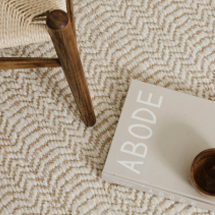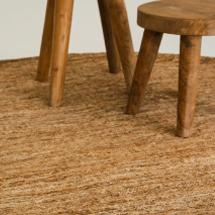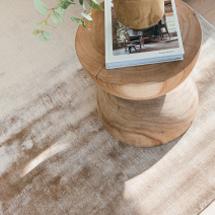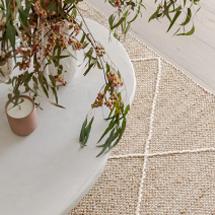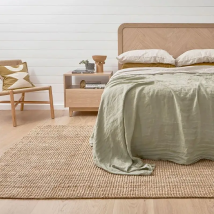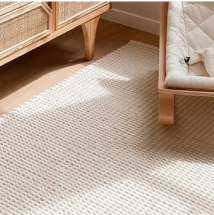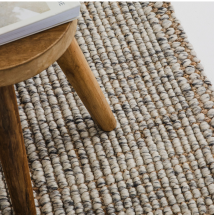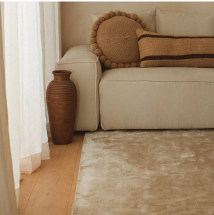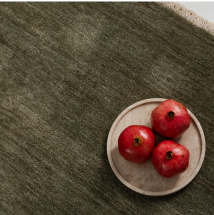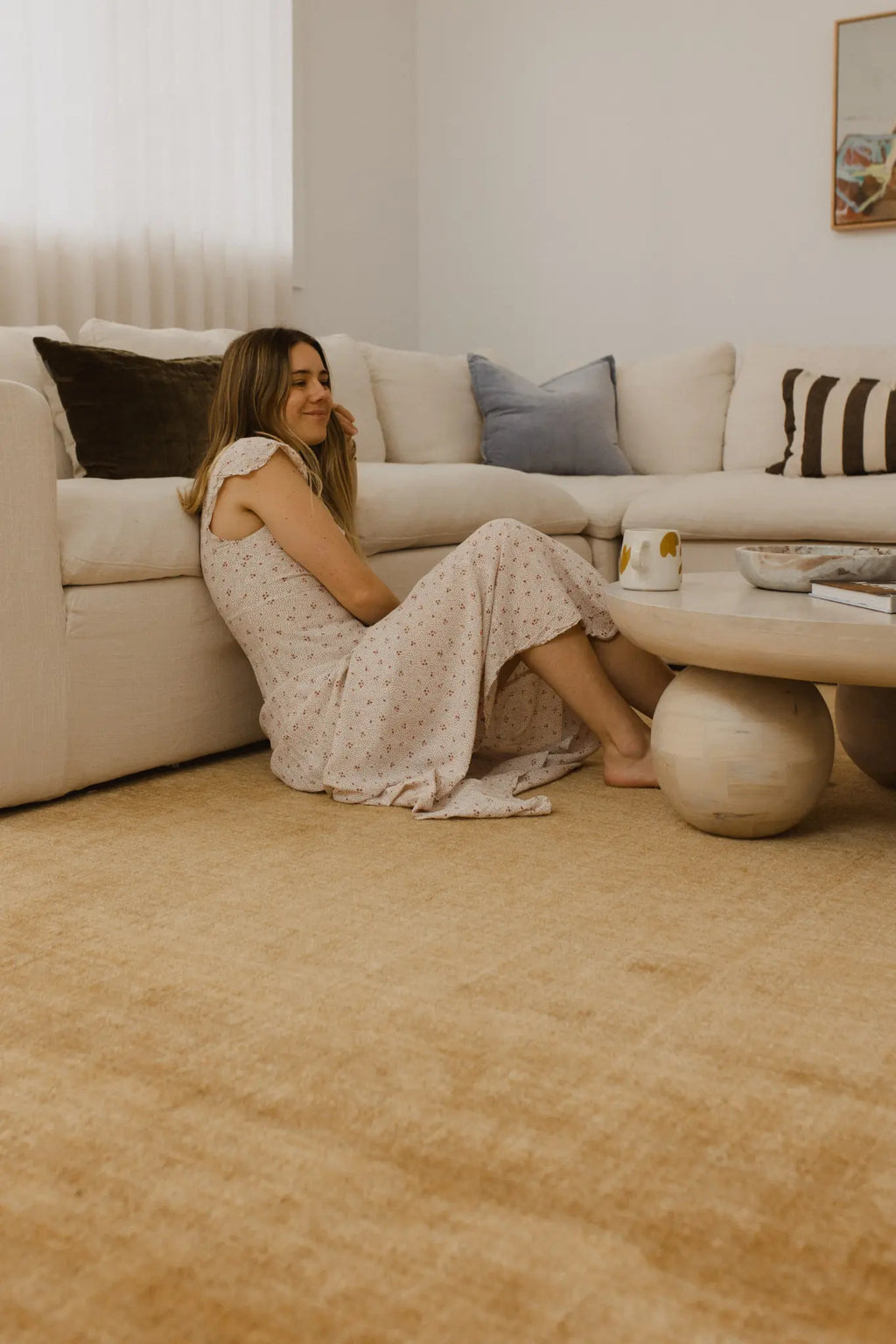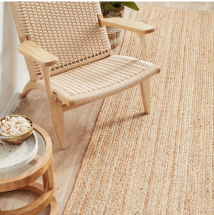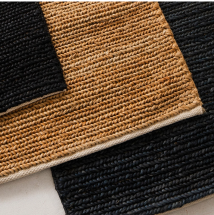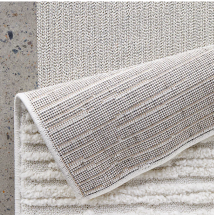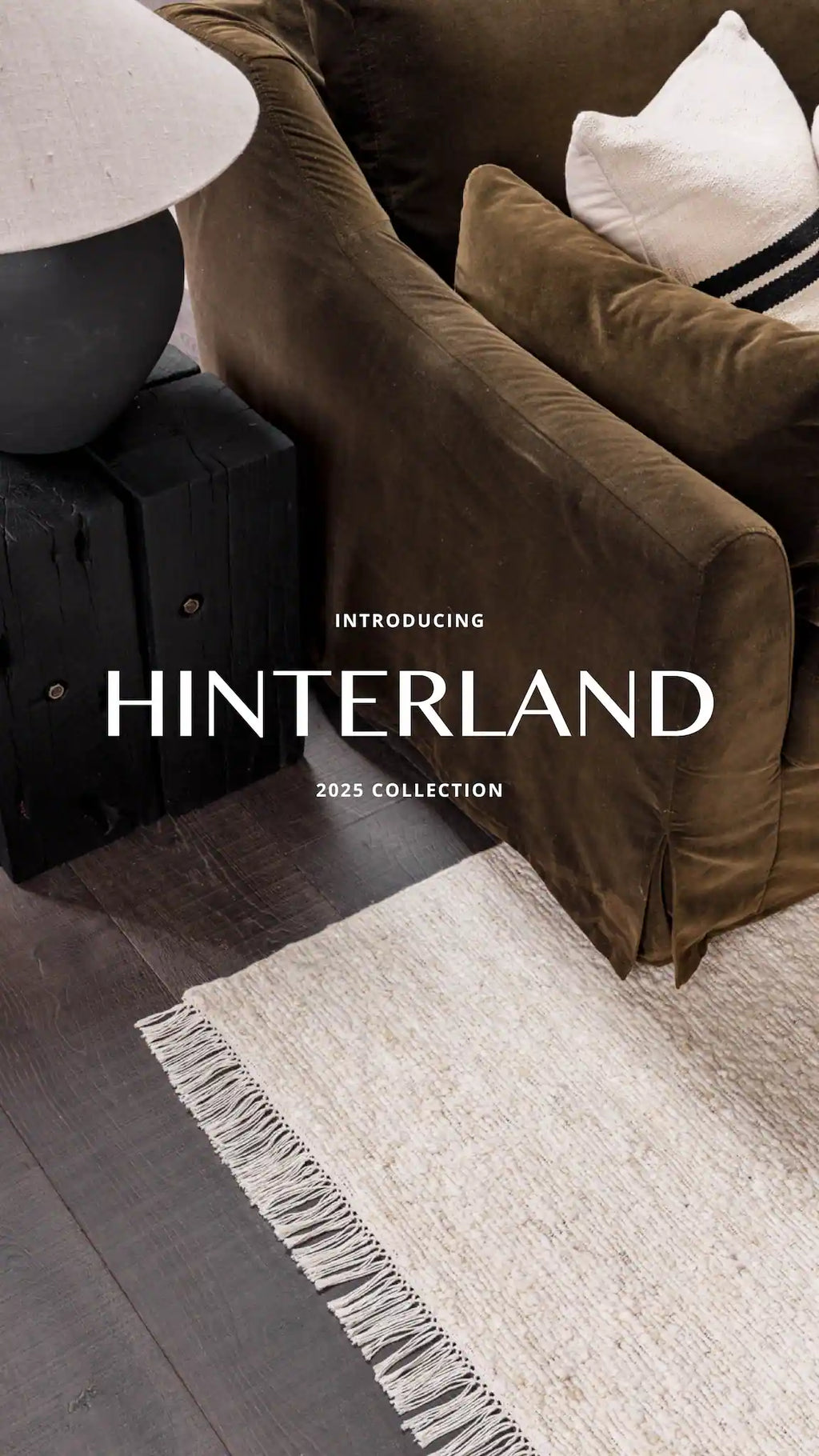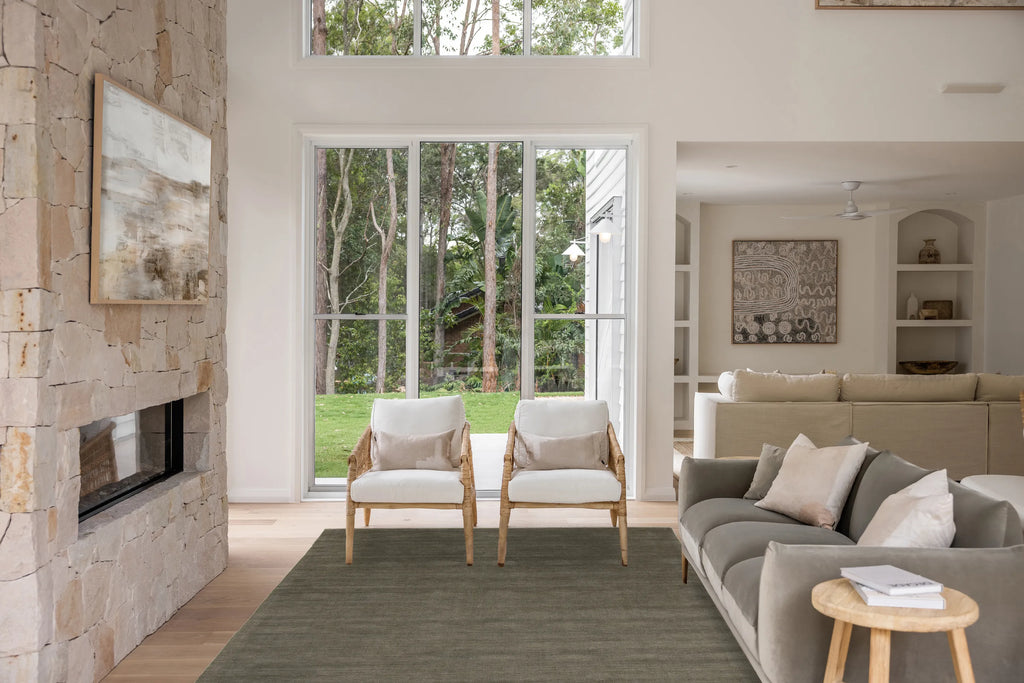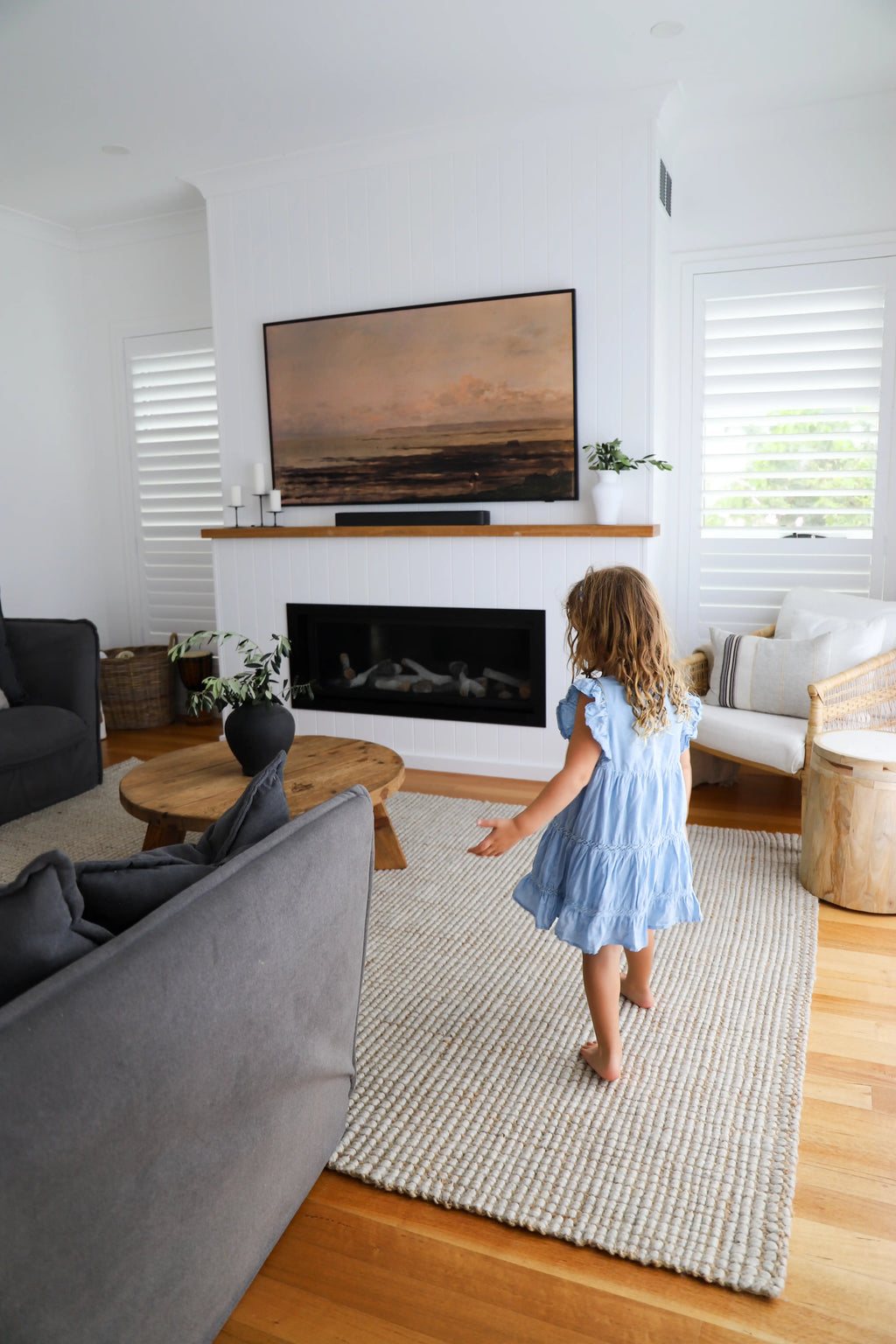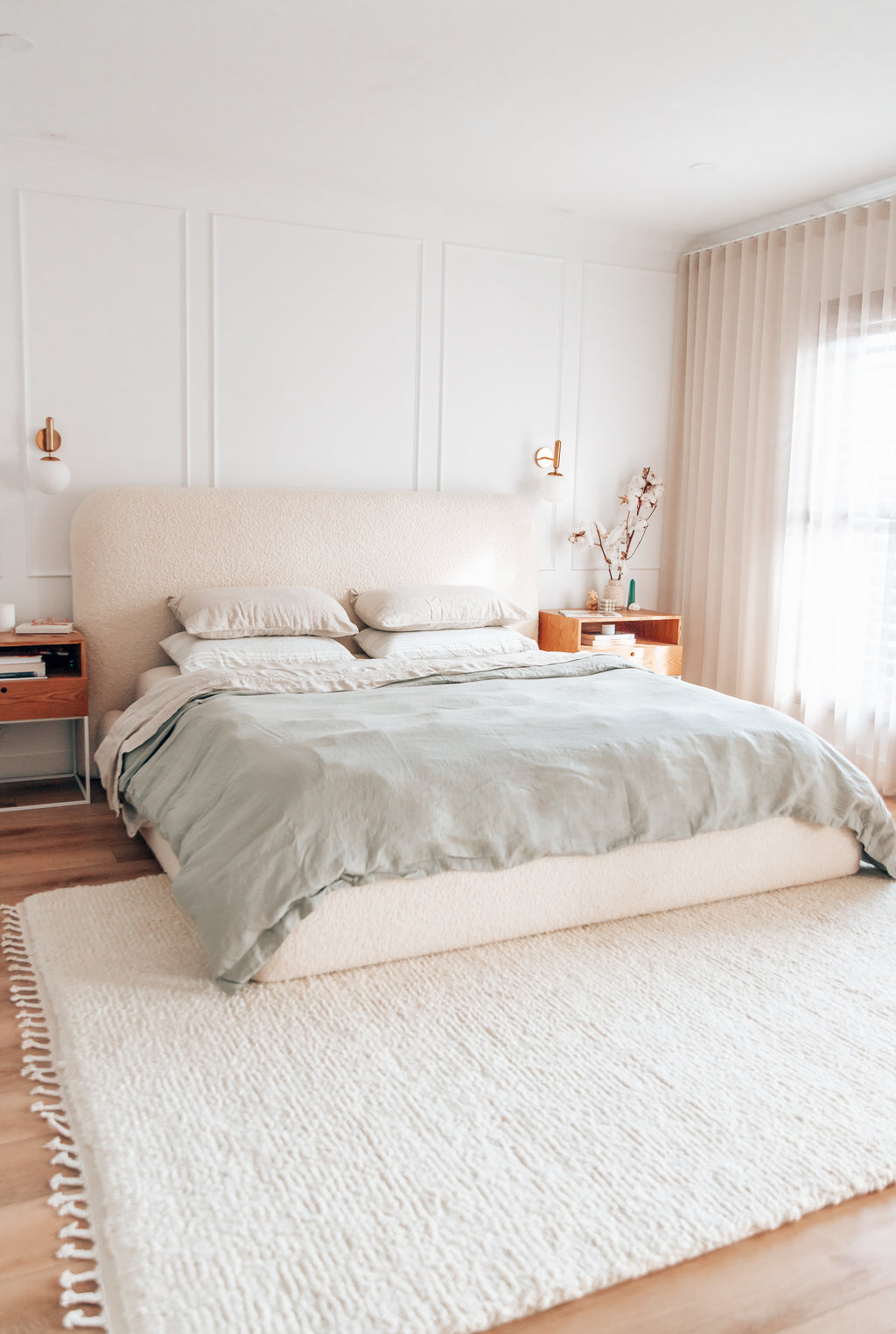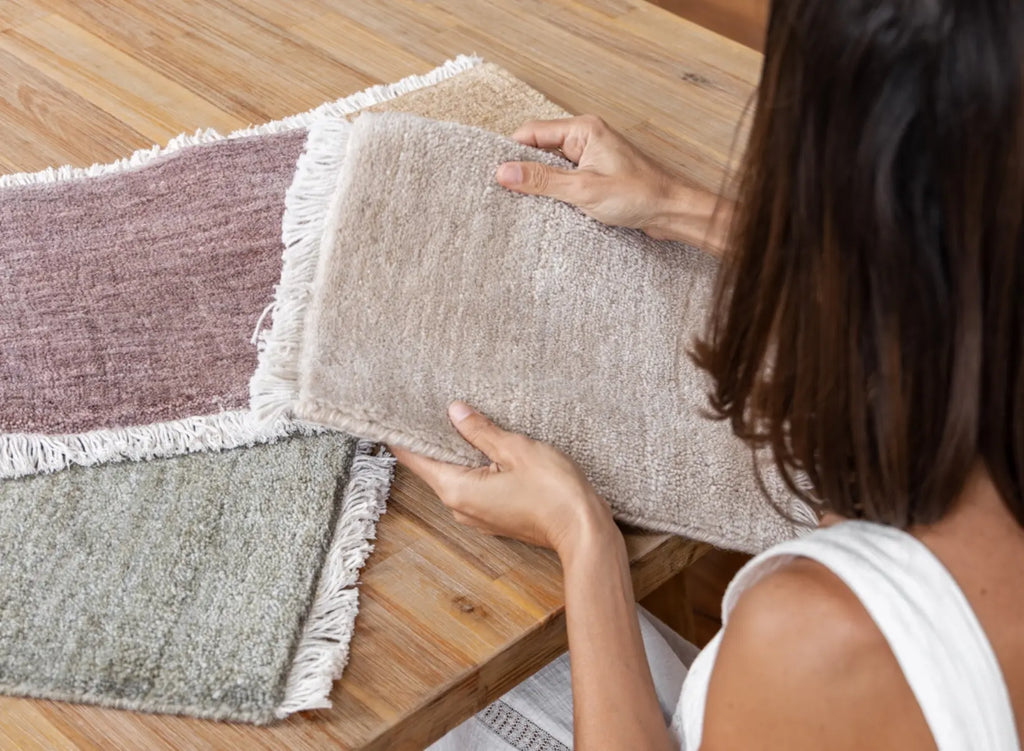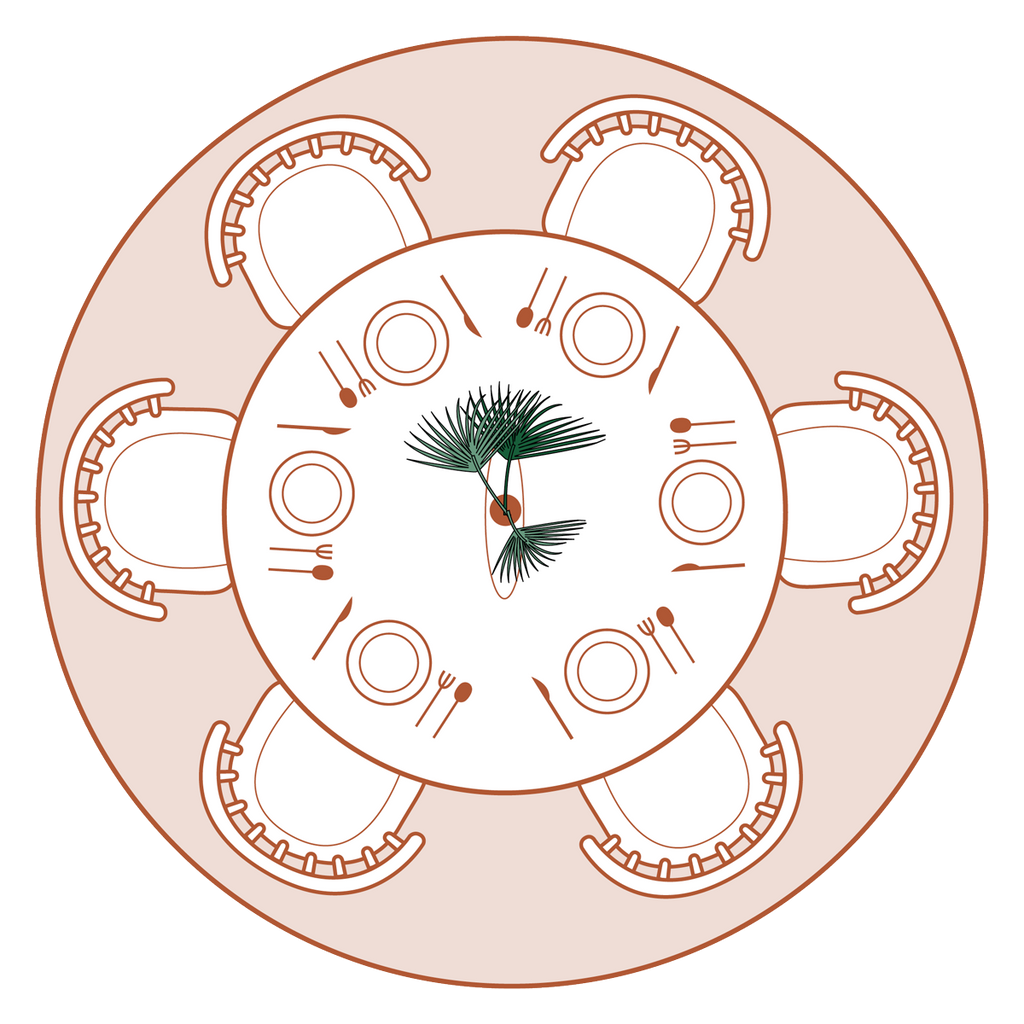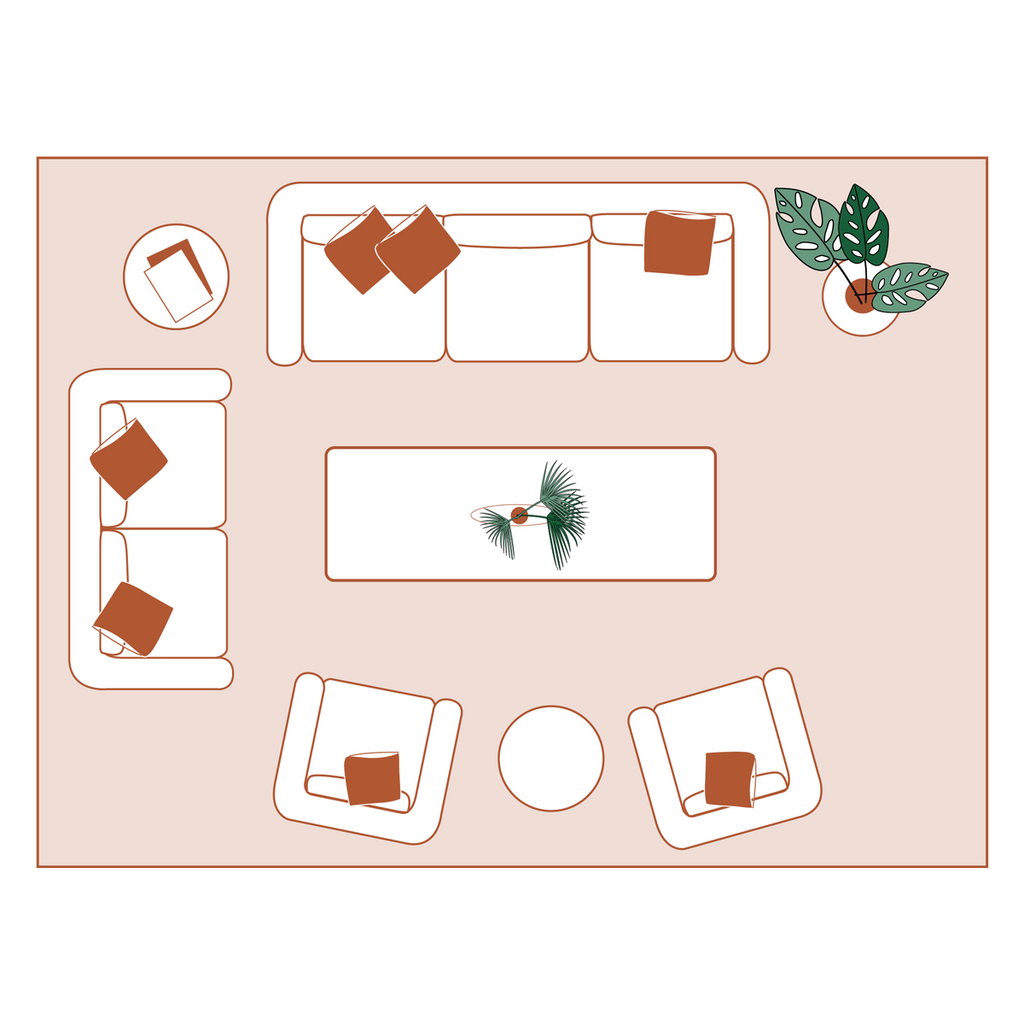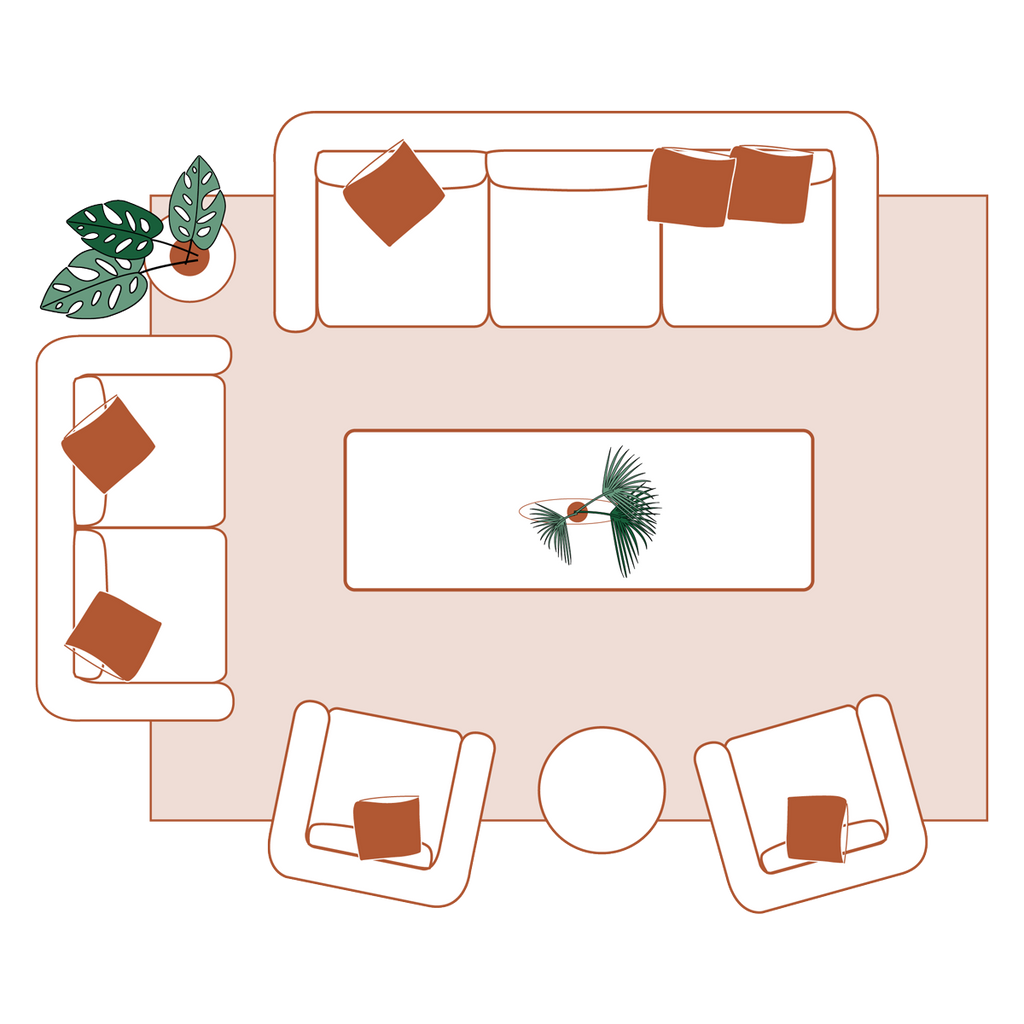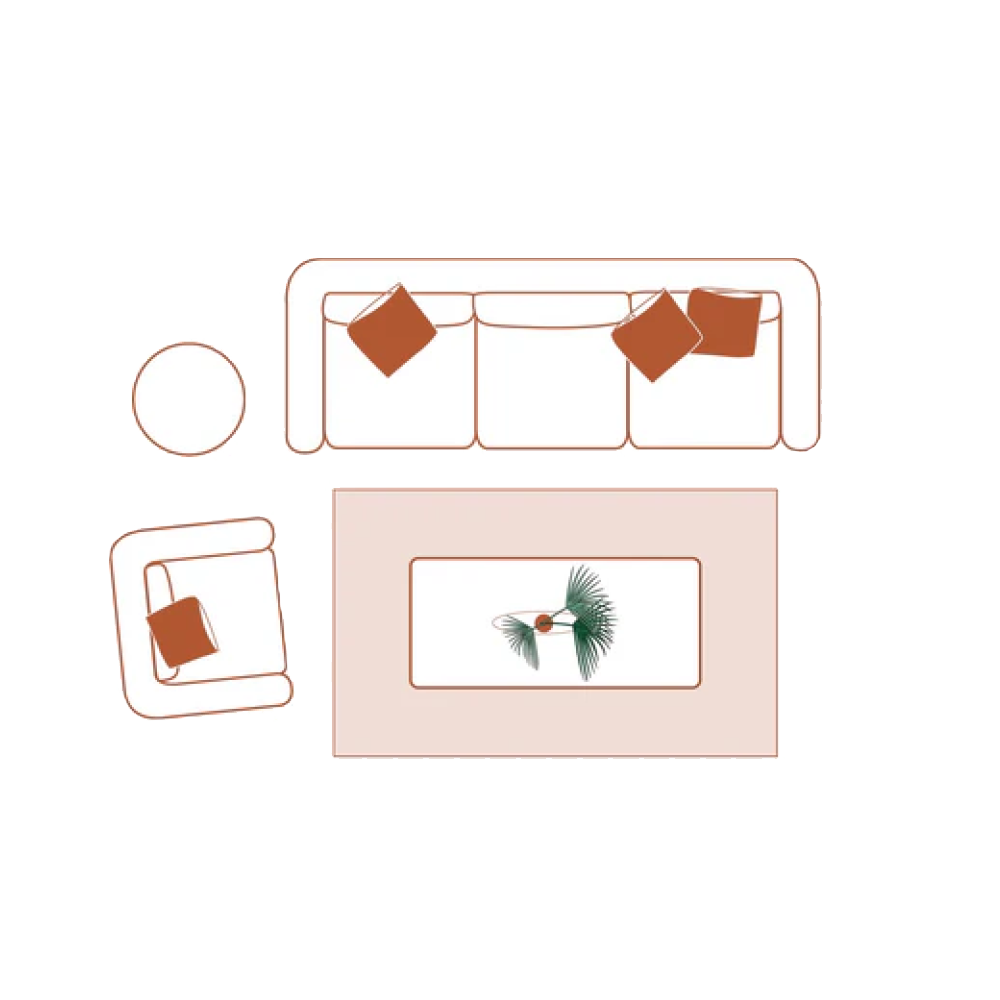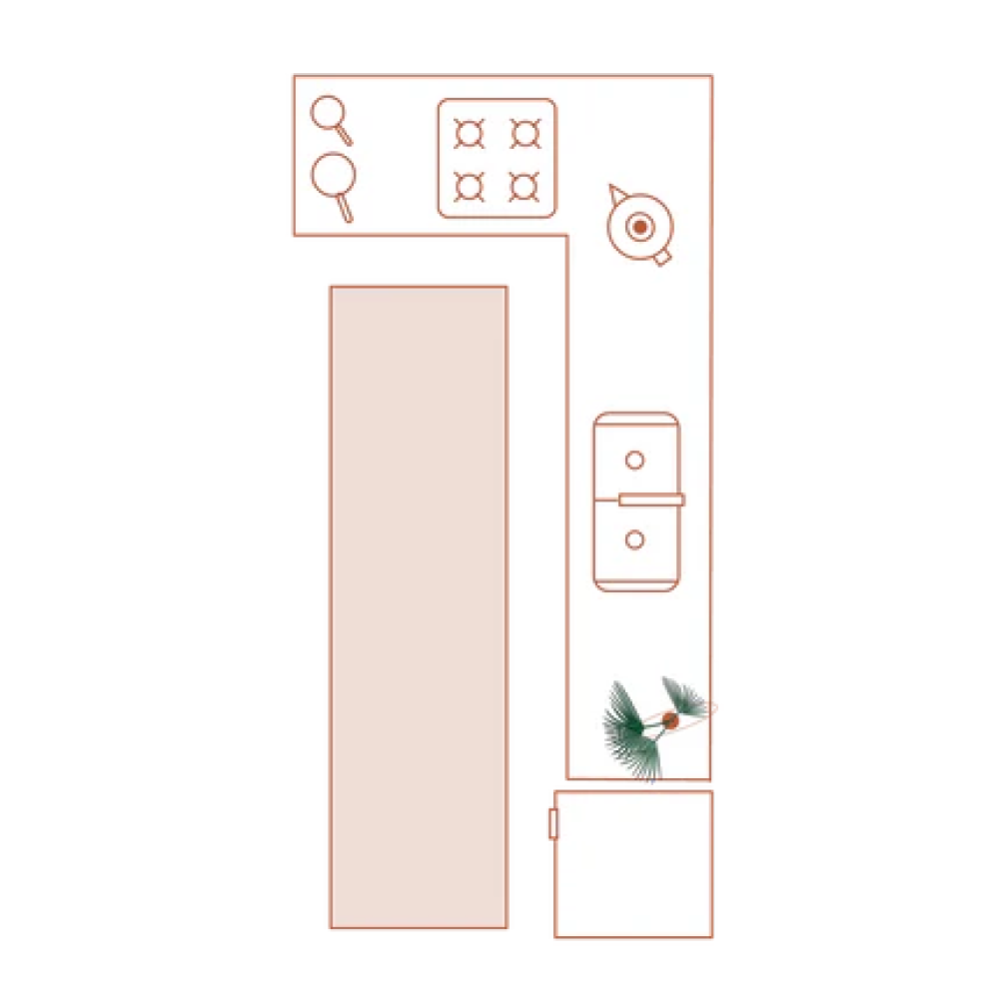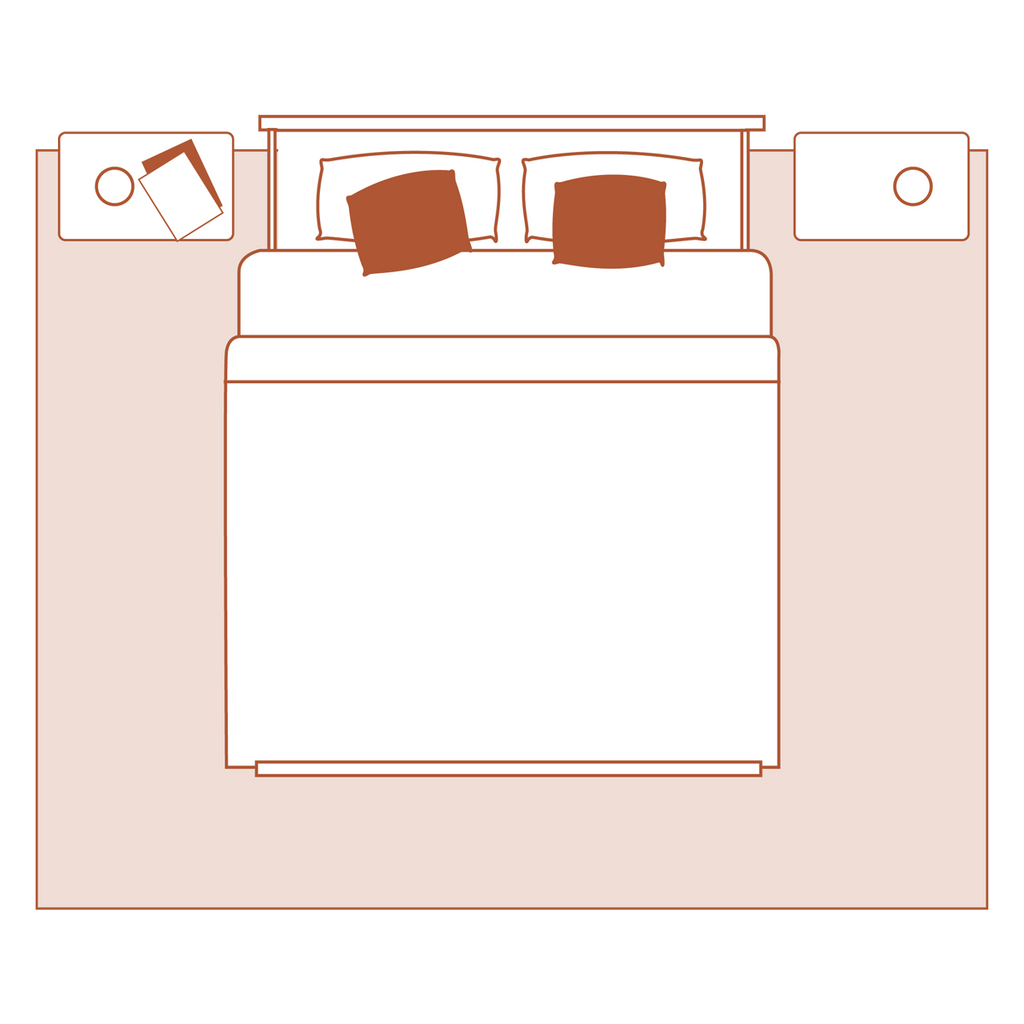Caring For Your Rug
-
Natural Fibre Rugs will Shed for the First 6 Months
All natural fibre wool rugs will shed and produce fluff for the first 6 months. Inferior quality wool rugs tend to shed for much longer, and far worse than premium New Zealand Wool (as the climate of New Zealand naturally produces wool with high lanolin, which makes it resistant to snapping and breaking). Shedding is a result of the making process and is not a fault, it's a standard characteristic of wool rugs. This will reduce month on month with regular vacuuming (on the lowest setting (without bristles or combs) — usually settling completely within a year. Initial shedding is a result of loose fibres that remain in the rug from the making process. If this natural process is something you can't tolerate, a polypropylene/polyester rug may be more suitable for you, despite the impact on the planet.
-
Handmade Natural Fibre Rugs will Sprout
Tufts/sprouts are perfectly normal, especially where the end of the yarn pops up from being tucked under the weave. Simply push these tufts back in using a blunt instrument. Handmade natural fibre rugs — whether woven or braided — will naturally have imperfections and inconsistencies. These unique variations are one element of the beauty handweaved into each rug. -
How to Deal with Pilling
Pilling can occur due to moving furniture, traffic, vacuuming on high settings, or other mechanical agitation. Simply carefully trim with scissors. -
Vacuum Regularly
To remove dust and dirt, regular light vacuuming is recommended with your vacuum on the lowest setting (without bristles or combs). We suggest avoiding powerful vacuum settings or power heads — as stiff bristles and strong suction can damage the pile. For everyday cleaning of jute runners and doormats, a simple shake outside will remove excess dust, dirt and fluff. -
How to Fix Rug Not Lying Flat
Buckling/creasing/not lying flat is common when you first unroll your rug. The best way to speed up the rug relaxing flat is to reverse-roll / back-roll the rug and apply pressure at the same time on the area where the rug is creased / folded. Leave it back-rolled for a few hours or overnight to give the rug some time for its tension to relax. Then, lay it out again and see how well it worked. If needed, redo your reverse roll and repeat. If the above does not work, try lying the rug out in the sun for a couple of hours to warm up and loosen the fibres to help it flatten. -
Rotate your Rug
Try to rotate your rug every 6-12 months to ensure even wear. -
Clean Spills via Blotting & Spot Clean Immediately
The prompt removal of stains/soil marks is necessary to maintain your rug's appearance. If stains are not dealt with immediately they may become permanent and even a professional cleaner may be unable to help. Spills should be cleaned immediately. Never rub a spill, instead blot any liquids with a dry absorbent white cloth or white paper towel. Some stains may be cleaned with a mild detergent and lukewarm water. If the stain cannot be removed, like a paint, nail polish, shoe polish, seek specialist advice. Do not machine wash rugs.
For further protection of your new rug we recommend purchasing MicroSeal Protection. You can learn more about MircoSeal and purchase it here: https://rugsforgood.com.au/products/microseal-rug-protection -
Sunlight & Fading:
Placing rugs in direct and continuous sunlight will cause them to fade. It is best to avoid placing a rug in direct sunlight if possible, and to regularly rotate your rug if sunlight is falling on one area of the rug. Fading will happen slowly over time, and this bleaching effect will permanently damage your rug. It occurs more obviously with darker coloured rugs. -
Furniture Markings
Be aware that some heavy furniture can mark and flatten the pile in rugs, causing irreversible damage. Some heavy or sharp edged furniture pieces, or constant moving of furniture, can pull the rug out of shape so it appears less square. -
Get Your Rug Cleaned Professionally Every Year
Try to have your rugs professionally cleaned at least once every 12 months via a professional carpet/rug cleaner. Professional cleaning should be carried out only by a reputable company, and they should avoid using any shampoos or cleaners with a spirit base.
Manufacturing Variations / Characteristics of Handmade Wool Rugs
Our rugs are individually hand woven and as such are subject to the following manufacturing variations, which are not considered faults or defects:
-
Size
Being a handmade article, the size can vary by approximately 3% from the exact size ordered. -
Colour
Our products are made from natural and hand dyed fibres. Every effort is made to ensure there is minimal colour variation however some variation can be expected between dye lots. -
Design & Construction
Minor variations may be evident in the design and construction, including line or weave thickness, which is due to the fact that the product is a handmade item. -
Shading
Shading may occur due to changes in pile and weave direction. Areas of the rug may appear to have changed colour where the pile is facing a different direction. This is a natural effect in the rug and cannot be prevented. -
Fading
Placing rugs in direct and continuous sunlight will cause them to fade. Dark coloured products will fade more obviously in natural light or sunlight. Some colour may transfer on light coloured surfaces. Rotate your rug to minimize damage caused by natural light. -
Shedding
Natural fibre rugs will shed and produce fluff for the first 6 months. Inferior quality wool rugs tend to shed for much longer, and far worse than premium New Zealand Wool (as the climate of New Zealand naturally produces wool with high lanolin, which makes it resistant to snapping and breaking). Shedding is a result of the making process and is not a fault, it's a standard characteristic of wool rugs. This will reduce month on month with regular vacuuming (on the lowest setting (without bristles or combs) — usually settling completely within a year.
